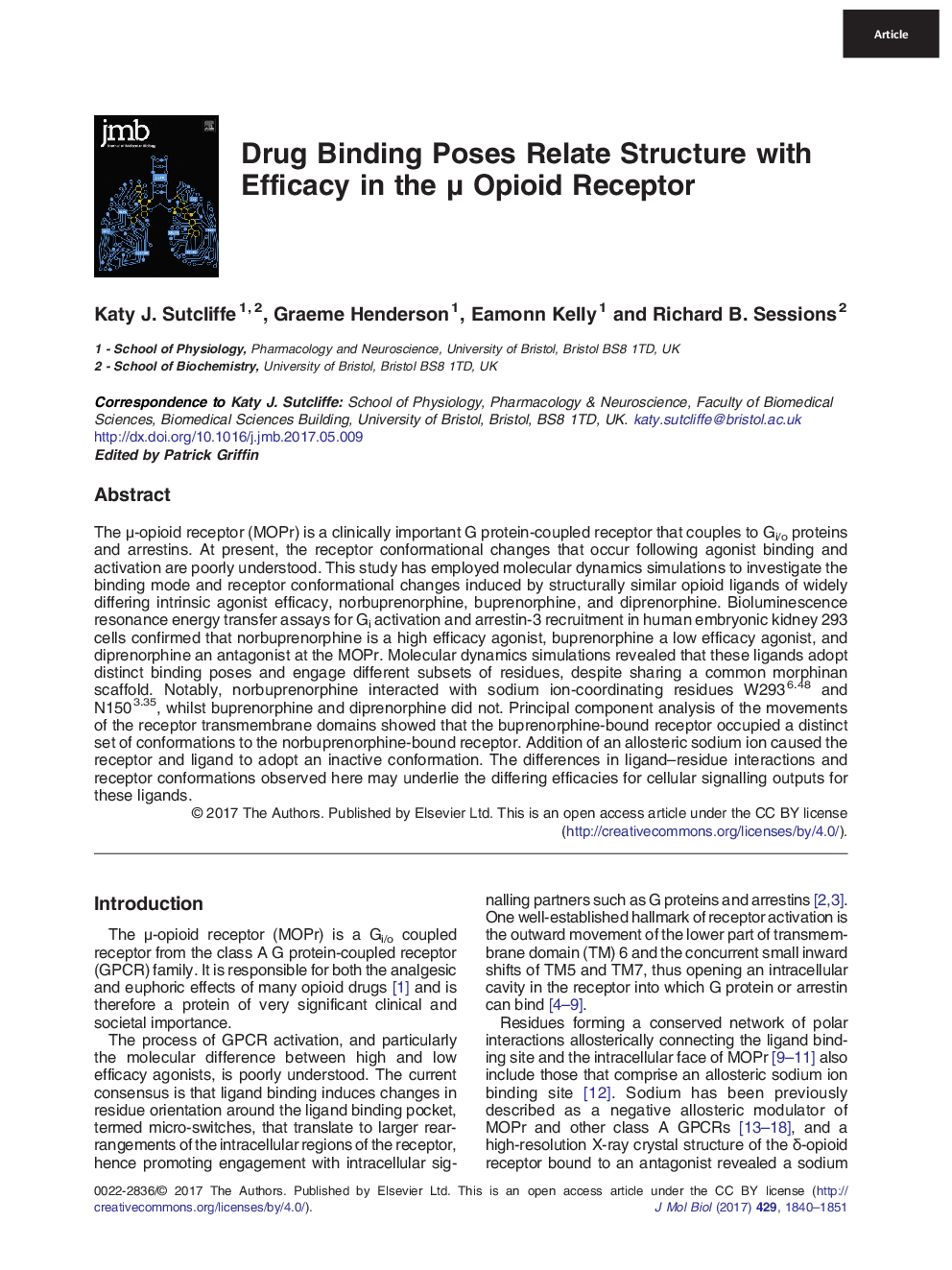| کد مقاله | کد نشریه | سال انتشار | مقاله انگلیسی | نسخه تمام متن |
|---|---|---|---|---|
| 5533296 | 1402113 | 2017 | 12 صفحه PDF | دانلود رایگان |
- Efficacy at the MOPr is explored with molecular dynamics simulations.
- Ligands of different efficacy have distinct binding poses and residue interactions.
- High and low efficacy ligands induce different conformations of receptor helices.
- This provides an explanation for the different signalling abilities of these ligands.
The μ-opioid receptor (MOPr) is a clinically important G protein-coupled receptor that couples to Gi/o proteins and arrestins. At present, the receptor conformational changes that occur following agonist binding and activation are poorly understood. This study has employed molecular dynamics simulations to investigate the binding mode and receptor conformational changes induced by structurally similar opioid ligands of widely differing intrinsic agonist efficacy, norbuprenorphine, buprenorphine, and diprenorphine. Bioluminescence resonance energy transfer assays for Gi activation and arrestin-3 recruitment in human embryonic kidney 293 cells confirmed that norbuprenorphine is a high efficacy agonist, buprenorphine a low efficacy agonist, and diprenorphine an antagonist at the MOPr. Molecular dynamics simulations revealed that these ligands adopt distinct binding poses and engage different subsets of residues, despite sharing a common morphinan scaffold. Notably, norbuprenorphine interacted with sodium ion-coordinating residues W2936.48 and N1503.35, whilst buprenorphine and diprenorphine did not. Principal component analysis of the movements of the receptor transmembrane domains showed that the buprenorphine-bound receptor occupied a distinct set of conformations to the norbuprenorphine-bound receptor. Addition of an allosteric sodium ion caused the receptor and ligand to adopt an inactive conformation. The differences in ligand-residue interactions and receptor conformations observed here may underlie the differing efficacies for cellular signalling outputs for these ligands.
Graphical Abstract113
Journal: Journal of Molecular Biology - Volume 429, Issue 12, 16 June 2017, Pages 1840-1851
